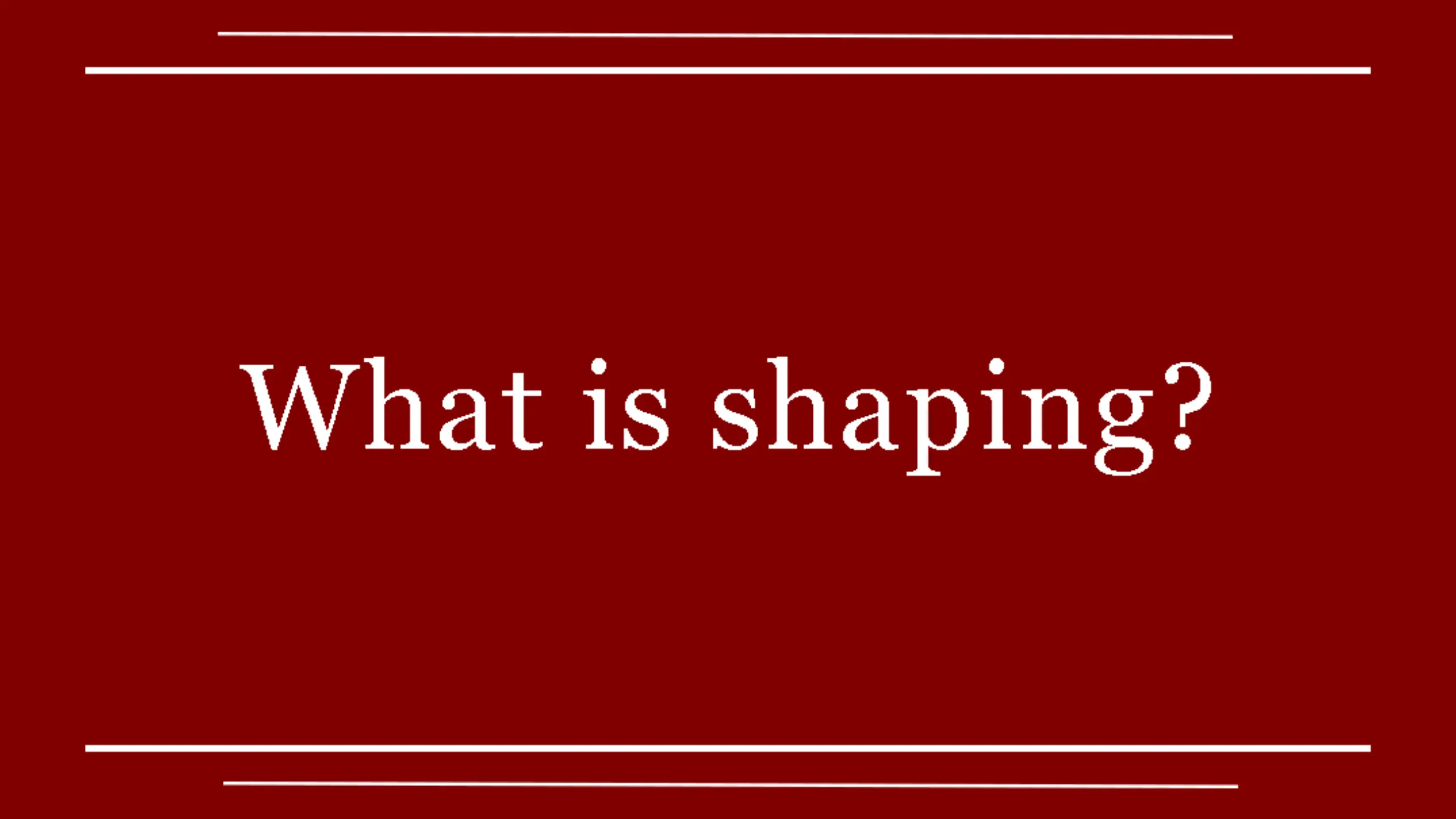Shaping is a way to make someone or something do something new. It uses rewards to make the new behavior happen. It also stops rewarding old behavior. This makes the old behavior go away. Shaping rewards behaviors that are close to the new behavior. These behaviors are called steps. For example, if you want to teach a dog to roll over, you can start by rewarding the dog for lying down. Then you can reward the dog for turning its head. Then you can reward the dog for lifting one paw. And so on until the dog rolls over. Shaping was made by B.F Skinner. He was a scientist who studied how behaviors change because of rewards. In this article, we will explore What is shaping, its importance, the process involved, and its applications.
When and why use shaping?
Shaping can be used for different reasons, such as:
- To make someone or something do something new that they do not do now. For example, you can use shaping to teach a child to say a word, a rat to press a button, or a dolphin to do a trick.
- To make someone or something do something again that they stopped doing. For example, shaping can be used to help a person walk again after they got hurt.
- To make someone or something do something better or different than they do now. For example, shaping can be used to help a person talk louder, run faster or play music better.
Shaping is not good when:
- The new behavior happens sometimes already. In this case, other ways can be used to make the behavior happen more often or more well.
- The new behavior is too hard or too different from the old behavior. In this case, shaping may take too long or be too hard to work.
How to use shaping?
To use shaping well, you need to do these things:
- Pick the new behavior and the old behavior. The new behavior is what you want to happen at the end. The old behavior is what happens now that is close to the new behavior. For example, if you want to teach a child to say “water”, the old behavior could be making any sound.
- Pick a reward and a special reward. A reward is something that the person or animal likes or wants, such as food, praise, or attention. A special reward is something that goes with the main reward because of learning, such as a sound, a word, or a sign. You can give a special reward right after the new behavior and it does not make them full or bored. That is why a special reward is good.
- Reward steps of the new behavior. Steps are behaviors that are more and more like the new behavior. You need to reward each step and stop rewarding the old ones until you get to the new behavior. For example, if you want to teach a child to say “water”, you can start by rewarding any sound. Then you can reward only sounds that start with “w”. Then you can reward only sounds that end with “r”. And so on until the child says “water”.
- Stop giving the reward and the special reward. When the new behavior happens and stays, you need to slowly give fewer and fewer rewards and special rewards. This will help the person or animal keep doing the new behavior without needing rewards.
Conclusion
Shaping is a way to make new behaviors happen by using rewards. It also stops rewarding old behaviors by making them go away. You can use shaping for many reasons such as making new behaviors, making old behaviors again or making better or different behaviors. Shaping needs picking the new behavior and the old behavior, picking a reward and a special reward, rewarding steps of the new behavior and stopping giving the reward and the special reward.

